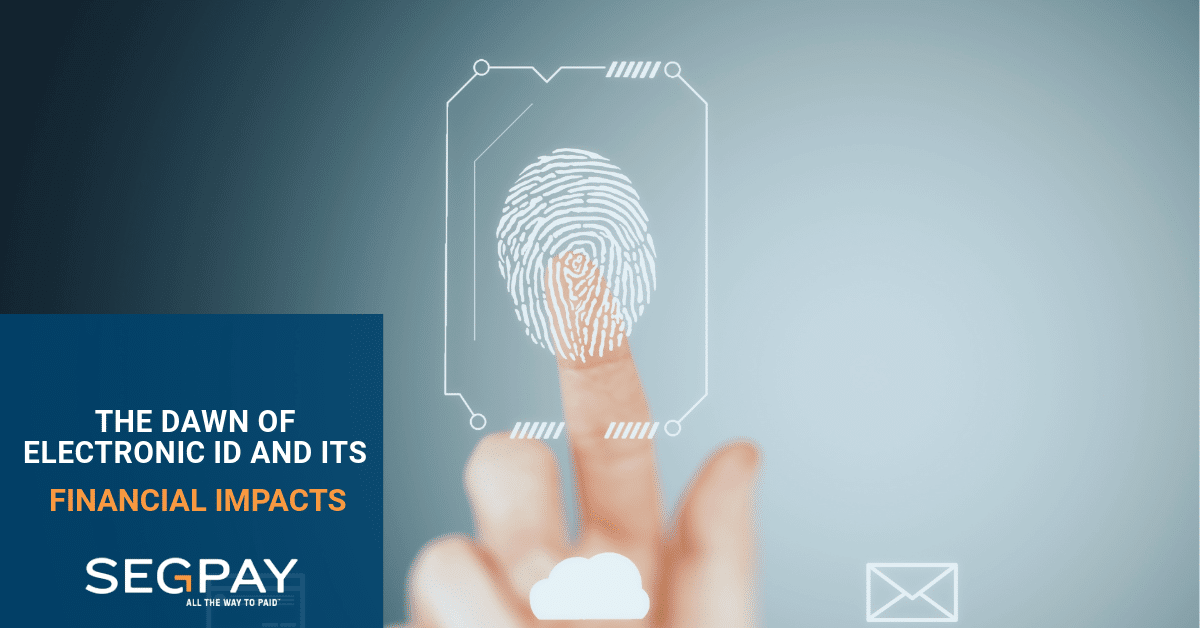- 3 minute read
Next year the European Union plans to release its biometrically secured electronic ID (eID). What is it? An eID is an all-in-one digital identity gateway and something that could change payments in the future. It could also simplify remembering all those passwords as it would be able to store your entire digital identity. In this month’s column we look at a breakdown of the pros and cons of this new digital tool and what it means to merchants around the world.
Your Information Storage Center
By 2024 every EU state will make a digital identity wallet available to anyone who wants one. They won’t be required but there will be incentives to help get people to try it out. The eID could remove any barriers of trade and is designed to simplify where you store your documents, keeping all of it in one place. For example, the eID can store online and offline identification like a driver’s license, proof of medical certificates including vaccinations, an ID to open a bank account or to apply for a loan, authorization for cross-border payment transactions, and much more. For some this will be an app that will be hard to resist. It will come with a simple one-step ID verification when accessing public and commercial services in the EU and will bring a sense of security when authorizing digital transactions.
Banking Benefits
For financial institutions including banks, fintech, payment services providers, and merchant acquirers there are big potential benefits. For example, with one unified eID, workflows will improve especially for risk management and compliance departments. Things like due diligence, know your customer (KYC) and anti-money laundering (AML) processes will become faster and more efficient as the information will all be found in one location. Having the eID will also optimize customer retention and check out rates because the information necessary for onboarding like ID verification and authentication procedures will become simplified, fast, and frictionless. eID will provide stronger customer identification checks like eSignatures and website authentication certificates. Essentially getting all the information needed will almost be dummy proof!
The cross-border payment experience is expected to improve. eID will help to authenticate and secure transactions. It’s predicted that with eID digital payment fraud will drop allowing both customers and financial institutions more protection against financial criminals because it complies with all EU rules and regulations like 3D secure and strong customer authentication (SCA) as dictated by the EU payment directive PSD2. This makes it easier for financial institutions to operate in the EU region. For all of this to work, trust will need to be established especially when sharing data with third parties so when EU citizens sign documents with a qualified electronic signature they’ll feel secure because eID is designed to meet the highest possible proofing and security guarantees. Users will remain in control of their personal data with eIDs and be able to select which elements of their identity they want to share with a financial, government or other institutions.
Clearing the Hurdles
As great as it sounds there are still many concerns for EU citizens’ privacy and data security. With all that data stored in one wallet industry experts and EU politicians worry about the consequences of a data breach or attack by cyber criminals. We’re talking about the personal information of over 450 million Europeans. Tech companies also have concerns. Google and Mozilla object to the new EU trust certificates claiming these certificates would be less secure and technically challenging to put into place. Trade groups are also unsure about how long it will take to implement and the cost efficiency of having to integrate the eID into their own infrastructure.
The debate on this is likely to continue well into the launch sometime next year but with less administrative challenges business and customers alike could see increased profits and higher customer satisfaction thanks to safer transactions from the implementation of eID. We’ll have to wait and see what happens.
Want to learn more about eID?
Contact us today reach out to us with your questions at [email protected] and we can share more insight about eID and how it might affect your business if you are in the EU.



